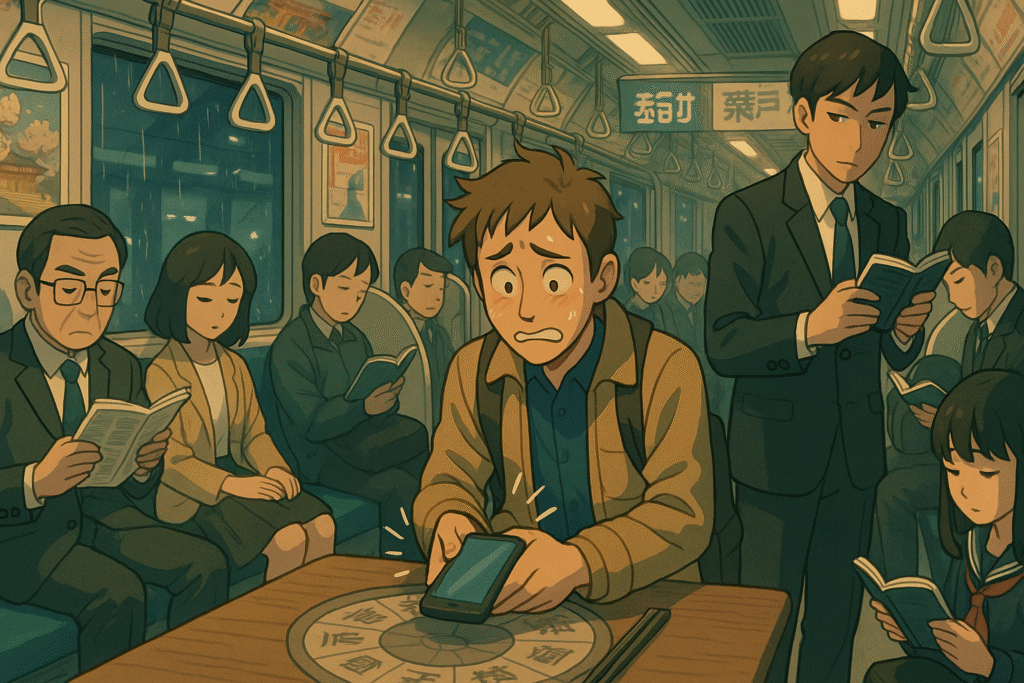Have you ever watched an anime where a character spends all day playing video games, rarely leaves their room, and has no job or educational pursuits? These characters represent what Japanese society calls “NEETs” – a social phenomenon that has become a common trope in anime storytelling. But what exactly is a NEET in anime, and why has this concept become so prevalent in Japanese pop culture?
The Definition of NEET: Beyond the Anime Stereotype
NEET stands for “Not in Education, Employment, or Training.” The term originated in the United Kingdom in 1999 with a report called “Bridging the Gap” that focused on social exclusion, but it has been especially embraced by Japanese society and, consequently, anime culture.
In anime, NEETs are typically portrayed as:
- Young adults (usually in their 20s or early 30s)
- Living with their parents or relatives
- Spending excessive time on hobbies like video games, anime, or manga
- Avoiding social responsibilities and interactions
- Having little motivation to change their lifestyle
However, the reality of NEETs is far more complex than anime often depicts.
NEETs in Popular Anime: Character Archetypes and Examples
Anime has embraced the NEET character type across various genres, turning what could be a negative stereotype into complex, relatable, and sometimes even aspirational characters:
No Game No Life: Siblings Sora and Shiro are shut-in NEETs with extraordinary gaming skills, which eventually transport them to a fantasy world where their gaming abilities make them powerful.
Welcome to the NHK: Tatsuhiro Satou is a hikikomori (a more extreme version of a NEET who rarely leaves their room) dealing with paranoia and social anxiety.
Recovery of an MMO Junkie: Moriko Morioka voluntarily becomes a NEET after quitting her stressful corporate job, finding solace in online gaming.
Eden of the East: The series features NEETs who are given resources to “save Japan,” suggesting that these socially withdrawn individuals might have untapped potential.
As our article on anime emotions explores, these characters often express their feelings in exaggerated ways that help viewers connect with their struggles.
The Reality Behind the Anime Trope
While anime often portrays NEETs as predominantly male otaku (obsessive fans) who are overweight and living in messy rooms, the reality differs significantly:
- In many countries, including the US, women make up the majority of NEETs (57% in the US)
- Many NEETs are stay-at-home parents, especially mothers
- The causes of becoming a NEET vary widely: family responsibilities, health issues, discrimination, lack of opportunities, and social exclusion
Different countries classify NEETs differently, with Japan considering people aged 15-34 who meet the criteria, while other nations focus on the 15-29 age range.
Want to explore Japan’s culture?
Discover Japan’s rich culture, traditions, and hidden gems with our expertly crafted guides. Get insider tips on travel, food, and history. All for free!
Why Do People Become NEETs? Understanding the Social Context
Contrary to the lazy stereotype often portrayed in anime, people become NEETs for various complex reasons:
- Socioeconomic factors: Lack of affordable education and employment opportunities
- Family environment: NEETs are 80% more likely to come from families without college education
- Mental health challenges: Depression, anxiety, and social phobias
- Discrimination: Social exclusion based on race, gender, or other factors
- Voluntary withdrawal: Some choose to opt out of traditional societal paths
The generational feedback loop is particularly troubling – NEETs often come from families where parents don’t work, creating a cycle that’s difficult to break.
Hikikomori vs. NEET: Understanding the Difference
In anime discussions, the terms “NEET” and “hikikomori” are sometimes used interchangeably, but they represent different social phenomena:
NEET refers to employment/education status – someone not working, studying, or training.
Hikikomori refers to a behavioral pattern – extreme social withdrawal where a person isolates themselves from society for six months or more.
While many hikikomori are also NEETs, not all NEETs are hikikomori. Some NEETs maintain active social lives and may be seeking employment or education opportunities.
For more on how Japanese cultural concepts translate into storytelling, check out our article on Japanese storytelling traditions.
The Personal and Social Costs of Being a NEET
Anime sometimes glamorizes or humorizes the NEET lifestyle, but the reality comes with significant challenges:
Personal costs:
- Higher rates of stress, anxiety, and depression
- Financial dependence and insecurity
- Reduced social skills and isolation
- Diminished self-esteem and sense of purpose
Societal costs:
- Economic impact through reduced workforce participation
- Strain on social welfare systems
- Family stress and reduced household income
- Potential contribution to social unrest
As our exploration of Cowboy Bebop’s themes shows, anime often tackles serious social issues beneath its stylized surface.
Why Anime Embraces NEET Characters
Despite the real-world challenges, anime has found creative ways to incorporate NEET characters:
- Wish fulfillment: NEETs with special talents or who are transported to fantasy worlds where their skills matter
- Comedy: The NEET lifestyle provides material for humorous situations
- Character development: The journey from NEET to socially engaged individual makes for compelling storytelling
- Social commentary: Examining why young people withdraw from society
- Relatability: Many anime fans may identify with aspects of NEET behavior
Breaking the NEET Stereotype
It’s important to remember that the anime portrayal of NEETs often reinforces stereotypes that don’t match reality. Most otaku (anime and manga enthusiasts) are employed or in school – after all, anime merchandise and media aren’t cheap!
If you’re interested in exploring more about Japanese culture and language beyond anime stereotypes, our learn Japanese page offers free guides to help you develop a deeper understanding of this rich culture.
Q&A About NEETs in Anime
Q: What does NEET stand for in anime? A: NEET stands for “Not in Education, Employment, or Training.”
Q: Are most NEETs in real life like they are portrayed in anime? A: No, anime typically exaggerates NEET stereotypes. In reality, NEETs come from diverse backgrounds, and many are women or caregivers.
Q: Is being a hikikomori the same as being a NEET? A: No, though related, hikikomori specifically refers to extreme social withdrawal, while NEET refers to employment/education status.
Q: Why do anime creators use NEET characters so often? A: NEET characters provide opportunities for wish fulfillment, comedy, character development, social commentary, and relatability to certain audience segments.
Q: Are all anime fans NEETs? A: Definitely not. The vast majority of anime fans are students, employed professionals, or otherwise engaged in education or work.
Conclusion: Beyond the Stereotype
The NEET phenomenon in anime represents both creative storytelling and a reflection of real social concerns in Japan and globally. While anime often exaggerates or transforms this concept for entertainment, the underlying issues of social withdrawal, economic pressure, and finding one’s place in society remain relevant themes.
Next time you encounter a NEET character in anime, you’ll have a deeper understanding of the complex social reality behind this common trope. Whether portrayed as comedic shut-ins or hidden geniuses waiting for their moment, these characters reflect genuine concerns about youth engagement in an increasingly competitive world.
Have you noticed how anime portrays NEETs differently across various genres? Share your thoughts or favorite NEET characters in the comments below!
Love Japan? Stay in the Loop!
Get the best of Japan straight to your inbox: language, culture & travel insights!




